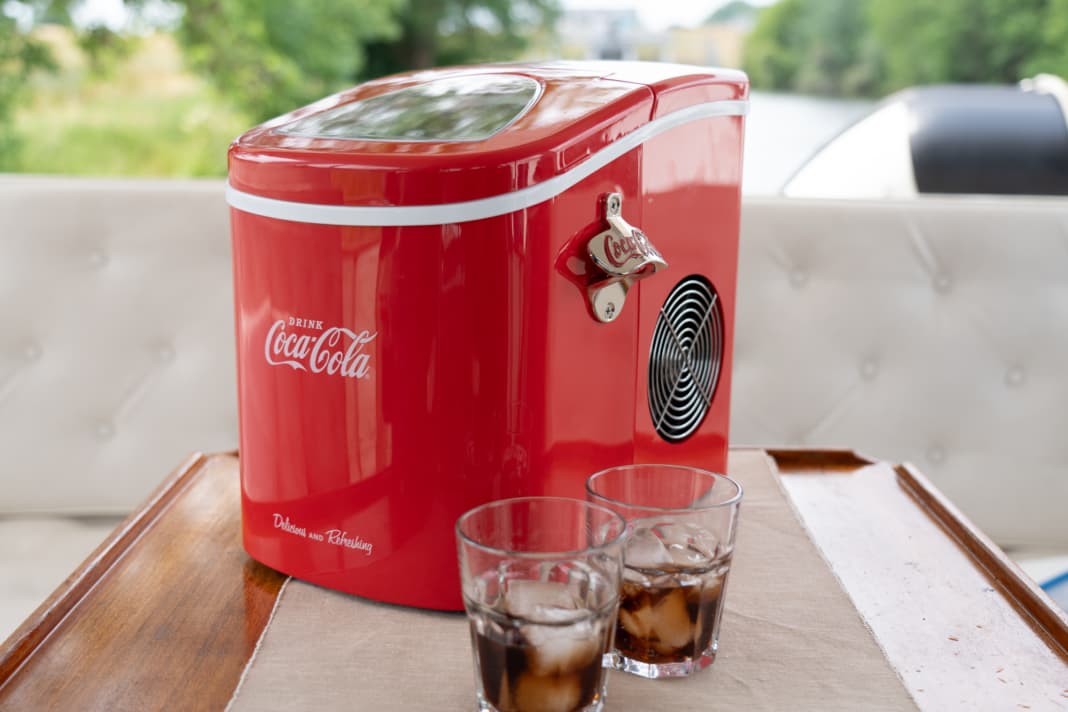





The charcoal is glowing, the sausage is already crispy on the grill. But the cool drinks are missing. Everyone knows it. To prevent such a situation from happening again on board in the future, we have taken precautions for the sunny days of the coming summer and tested ice cube machines. Whether it's a cold cocktail, a soft drink or simply a cold glass of water. In summer, the body longs to cool down.
We tested six models. Most of the ice cube makers had a relatively similar or identical design. This is therefore also reflected in the very similar values in the table.
With a pleasant 24°C outside temperature on board, we subjected the devices to a practical test. In the shade, mind you. Temperatures that make you wish you had chilled drinks on the boat. The water we used for testing had a measured temperature of approx. 14°C.
Are the ice cube machines convincing?
The conclusion in advance: None of the appliances completely convinced us. The cubes were too small on all machines without exception. In some cases, they were so small that the first batches produced had already melted in the container before the second or third production could fall down. Some manufacturers write in the operating instructions that the first 1-3 productions of ice cubes can be smaller. However, as this usually takes at least 30 minutes, it is unfortunately not entirely clear what the benefits are, in contrast to conventional cubes produced in the freezer compartment. Here it takes a similar amount of time and the quality of the cubes is far superior to those from the ice maker with a hole in the centre due to the solid cube shape. The cubes from the freezer compartment are also much more durable, as their core temperature is much colder than that of the ice cube maker. Here, the average temperature of the cubes was around -0.6°C, whereas the temperature of conventional ice cubes is at least minus 15°C, depending on the freezer compartment setting. Faster melting is therefore inevitable if the cubes are just below the freezing point.
The compartment into which the finished cubes fall was clearly too hot in all the machines tested. Even after running for over 30 minutes. There is simply a lack of insulation in such a compact appliance. In the worst case tested, only 20 of the 30 cubes produced were left after 30 minutes.
After unpacking the test appliances, the Caso Ice Chef Pro was our visual favourite. A clearly legible display, stainless steel look and a large transparent lid. Unfortunately, however, the machine did not produce any ice cubes and switched off with an error message every time it was started. The appliance therefore does not appear in the table.
Conclusion: If you have time, let the appliance run for more than an hour and put the finished cubes in the freezer compartment after production, you can do something with the cubes. For a quick drink, for example when guests come on board spontaneously, we still use the cubes already prepared in the freezer.
Results of the test

